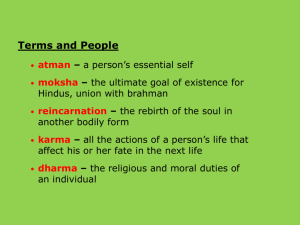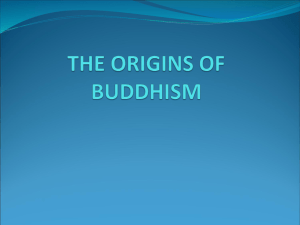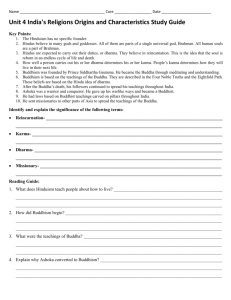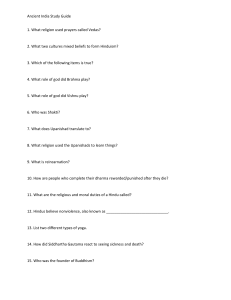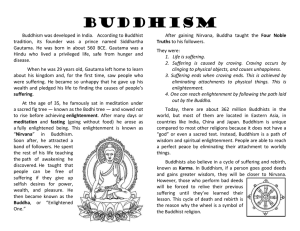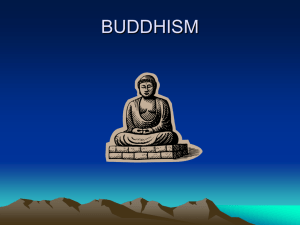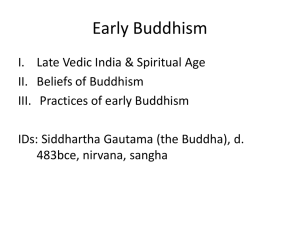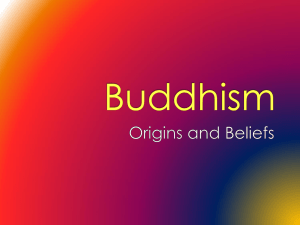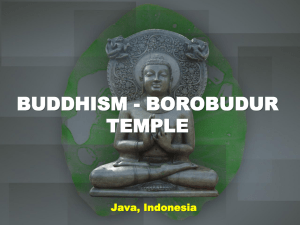BUDDHISM: Basic Teachings
advertisement
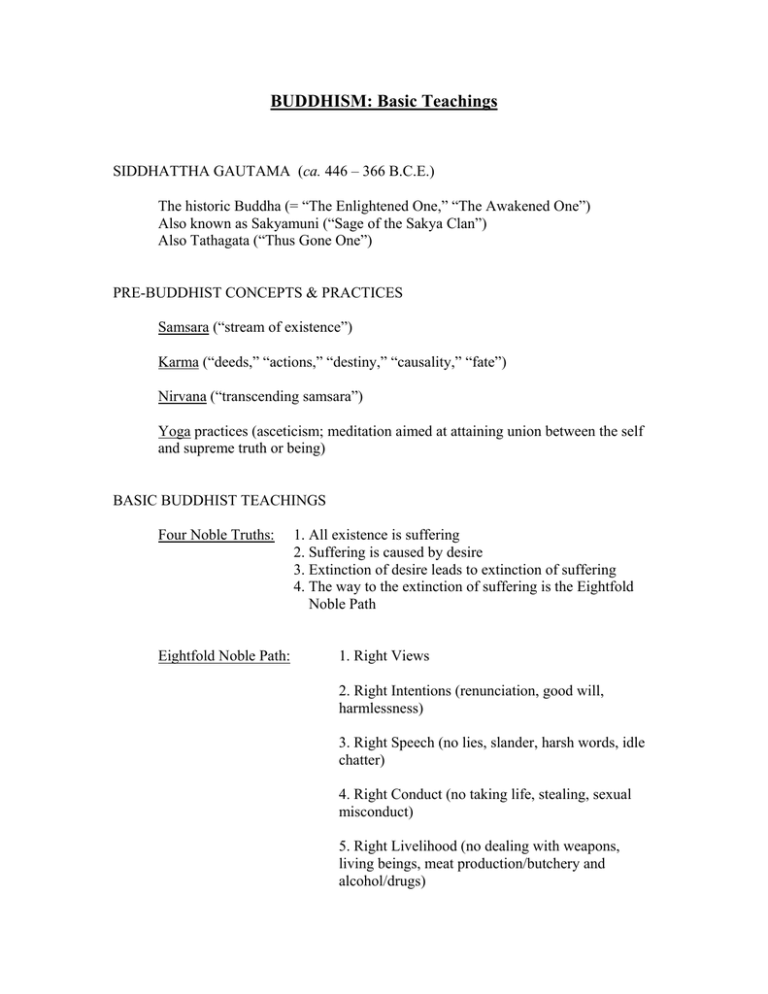
BUDDHISM: Basic Teachings SIDDHATTHA GAUTAMA (ca. 446 – 366 B.C.E.) The historic Buddha (= “The Enlightened One,” “The Awakened One”) Also known as Sakyamuni (“Sage of the Sakya Clan”) Also Tathagata (“Thus Gone One”) PRE-BUDDHIST CONCEPTS & PRACTICES Samsara (“stream of existence”) Karma (“deeds,” “actions,” “destiny,” “causality,” “fate”) Nirvana (“transcending samsara”) Yoga practices (asceticism; meditation aimed at attaining union between the self and supreme truth or being) BASIC BUDDHIST TEACHINGS Four Noble Truths: Eightfold Noble Path: 1. All existence is suffering 2. Suffering is caused by desire 3. Extinction of desire leads to extinction of suffering 4. The way to the extinction of suffering is the Eightfold Noble Path 1. Right Views 2. Right Intentions (renunciation, good will, harmlessness) 3. Right Speech (no lies, slander, harsh words, idle chatter) 4. Right Conduct (no taking life, stealing, sexual misconduct) 5. Right Livelihood (no dealing with weapons, living beings, meat production/butchery and alcohol/drugs) BUDDHISM: Basic Teachings / 2 6. Right Effort (prevent unwholesome states) 7. Right Mindfulness (contemplation of body, feeling, state of mind, phenomena) 8. Right Consciousness (meditation) Three Fundamental Principles: 1. All is transitory 2. All is suffering 3. All is egoless EARLY BUDDHISM Theravada Buddhism >> India, Ceylon (Sri Lanka), Southeast Asia “Hinayana” (“Lesser Vehicle”)—a generally pejorative title Focus on becoming a “worthy,” a “perfected disciple” (arhat or arahat) Reliance on one’s “own power” (jiriki in Japanese) for salvation Gautama Buddha seen as a great teacher Compilation of the Tripitika (“Three Baskets”) around 1st cen. B.C.E. (containing Buddha stories revealing disciplinary rules, sermons attributed to Gautama, and interpretations by later devotees) Veneration of the “Three Jewels” (Buddha, Doctrine, Monastic Order) MAHAYANA BUDDHISM (“Greater Vehicle”) >> to China, Korea, Japan 1. Theism—the deification of Gautama 2. Polytheism—the emergence of a pantheon of many Buddhas or Bodhisattvas Bodhisattva = “wisdom being”; “destined Buddha” = Kannon, Jizō, Miroku, Amida, et al. The Four Great Vows of the Bodhisattva: 1. To save all beings 2. To destroy all evil passions 3. To learn the Truth and teach it to others 4. To lead all beings toward Buddhahood 3. Afterlife—Heaven / Paradise / “Pure Land” (and also Hell) 4. Faith & Salvation through the grace of the gods BUDDHISM: Basic Teachings / = tariki (in Japanese): reliance on the “other power” of the gods = Nembutsu invocation (Namu Amida Butsu, or “Praise be to Amida”) 5. Metaphysics—concepts of “Emptiness,” “Void,” etc. = jiriki (“self power”; self-reliance) = this-worldly (as well as “otherworldly”) focus >> Zen 6. Esoteric (or “symbolic”) transmissions = mantra (verbal), mandala (pictorial), and mudra (hand gestures) 3


